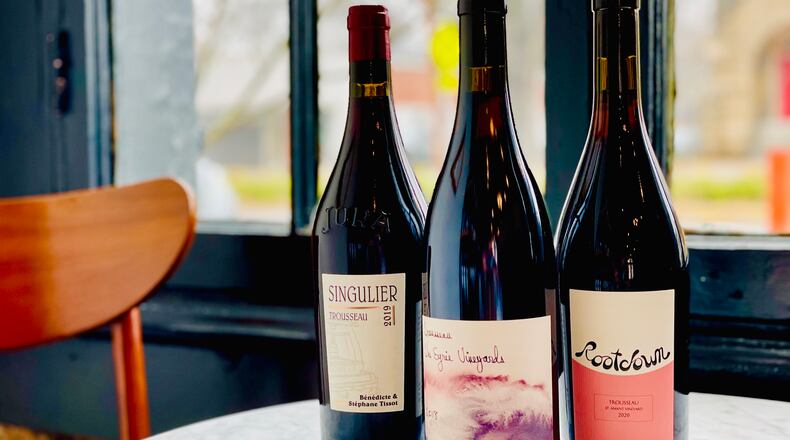Trousseau is an ancient red grape you’ve likely never heard of, yet it is having a moment. This Alpine grape has become a darling in recent years, especially as domestic winemakers seek unique grapes, and consumers lean into the food-versatile realm of lighter-bodied reds.
The trousseau grape hails from the Jura region of France, a very small area sandwiched between Burgundy and the Swiss border. It also is home to familiar grapes, like pinot noir and chardonnay, but the regional grapes are the most exciting, and our favorite is this rustic, yet lighter-bodied, red.
Trousseau originally was used as a blending grape, but started appearing as a single varietal wine in the 1970s. Like most grapes, this one has done some international traveling. In the 1800s, trousseau made its way to Portugal, where it goes by the name bastardo and is used in port production. It showed up in California vineyards as early as the 1860s, in field blends with zinfandel. But, it is only within the past decade that we’ve seen single-varietal releases domestically for this grape.
The alpine region is better known for its high-quality cheese, like comté. In the tradition of “grows together, goes together,” the trousseau grape is a natural delight when paired with gooey cheese, like raclette, melted over potatoes and pickles.
The grape is an enigma — light-bodied, but aromatically intense; juicy, but not without tannic grip. Those are some reasons why it is a favorite among the fondue and après-ski set.
There is no better way to understand the character of a grape than to taste several versions side by side. This can reveal what is inherently the same about a single varietal, but also help hone in on the factors that come from regional distinctions, as well winemaking decisions. The three trousseaus we have chosen are quite distinct from one another, but the floral, ripe strawberry quality is present in each. Look for these wines at well-stocked wine and bottle shops.
Rootdown Wines trousseau St. Amant Vineyard 2020 — This is one of several unique-for-the-region varietals from winemaker Mike Lucia. Incredibly light in color and body, this Northern California wine has notes of hibiscus, strawberries and cream, and watermelon agua fresca.
Bénédicte & Stéphane Tissot Arbois trousseau Singulier 2019 — This trousseau is from a highly respected family estate in Jura. It is the earthiest of the three wines on this list, with rustic notes of rich soil accompanying bright notes of strawberry and pomegranate.
The Eyrie Vineyards trousseau 2018 — Eyrie, in Willamette Valley, is a classic producer of Oregon pinot noir. Winemaker Jason Lett believed the region shared similar climatic conditions to Jura and planted an experimental small plot of trousseau in 2012. The experiment, in our opinion, was a great success. Funky and wild at first sniff, this wine reveals intense notes of strawberry-rhubarb, black raspberry and cinnamon bark.
The Slaters are beverage industry veterans and the proprietors of the Expat and the Lark Winespace in Athens.
Sign up for the AJC Food and Dining Newsletter
Read more stories like this by liking Atlanta Restaurant Scene on Facebook, following @ATLDiningNews on Twitter and @ajcdining on Instagram.
About the Author
The Latest
Featured


